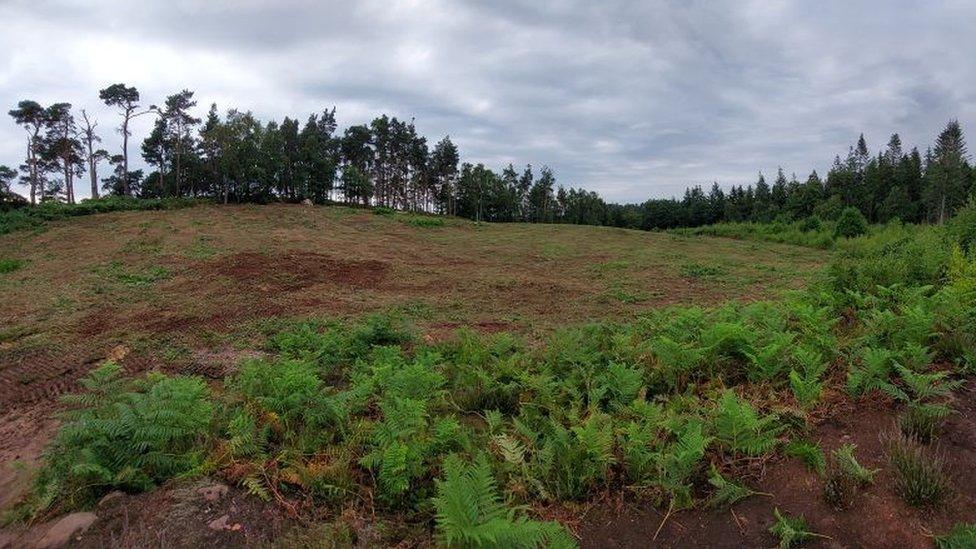Roman shrine found by hillfort archaeologists
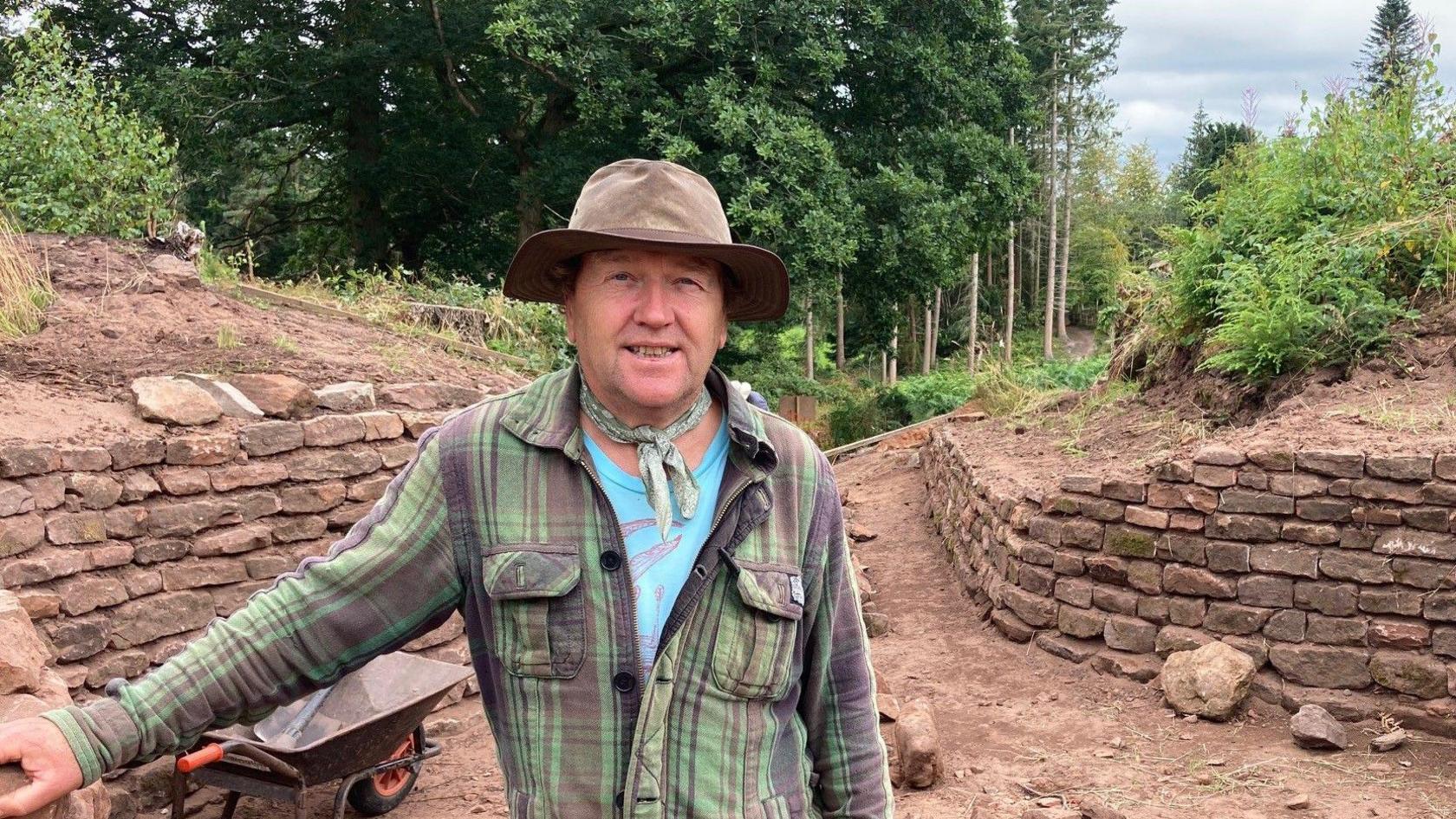
Dr Paul Reilly said a circle of worn stone indicated some sort of shrine
- Published
Archaeologists have discovered what they believe was a Roman shrine in the remains of an Iron Age hillfort.
They have been excavating a site near Nesscliffe in Shropshire and found a circle of worn stone surrounded by post holes.
Dr Paul Reilly, from the University of Southampton, said it suggested people had been regularly walking around something.
He said information boards would be put up to explain their finds and Historic England had called their discovery "spectacular".
A team of amateur and professional archaeologists carried out five examinations of the hillfort site which is believed to have been created about 500 BC.
The latest visit will be their last and Dr Reilly, a research fellow at the university, said they would spend another week completing their searches.
That will include a search for more post holes.
They believed the shrine was created during the Roman occupation of Britain, between the first and fourth centuries, based on pottery fragments found nearby.
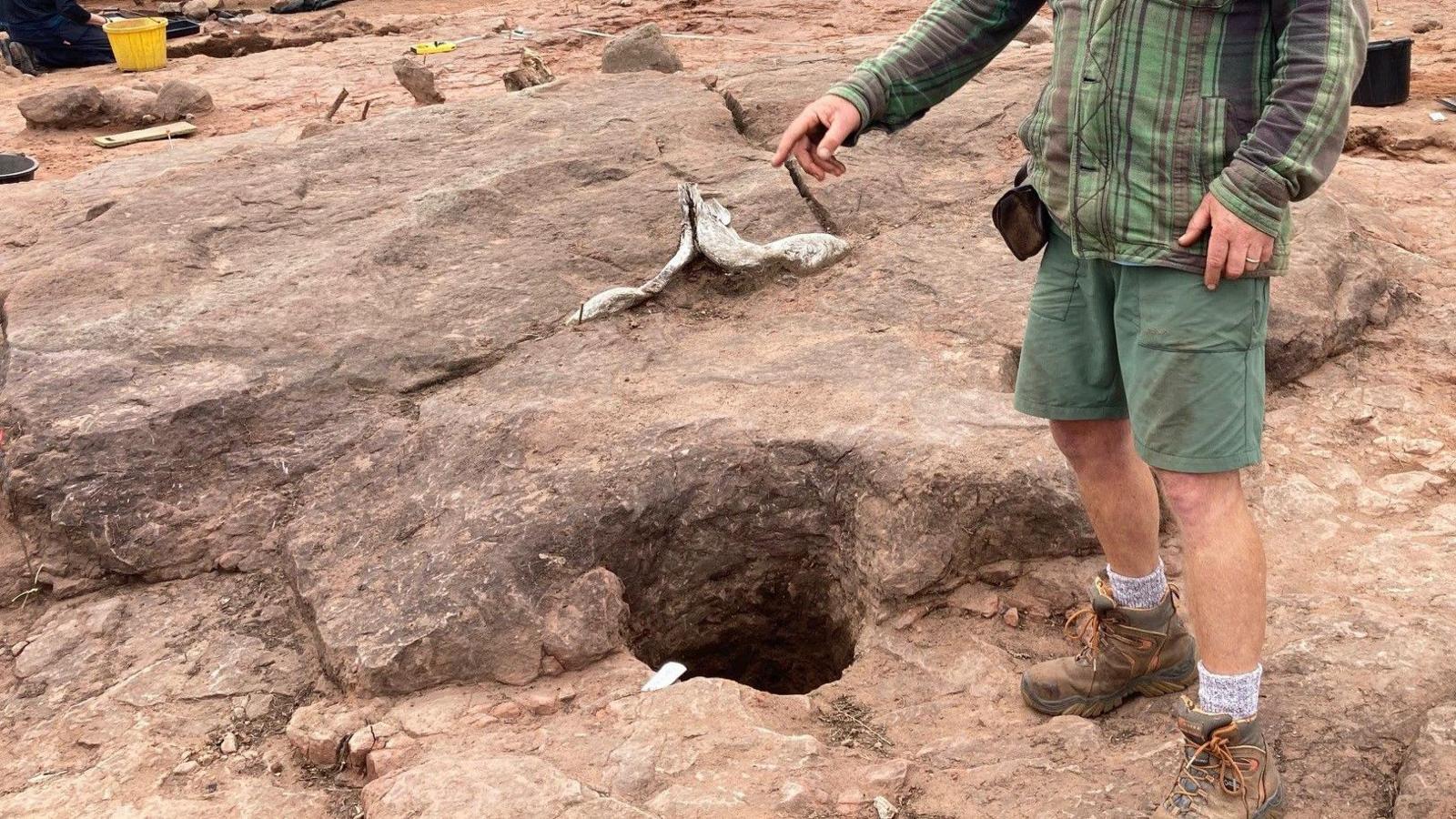
Post holes of various sizes appeared to have been cut into the bed-rock
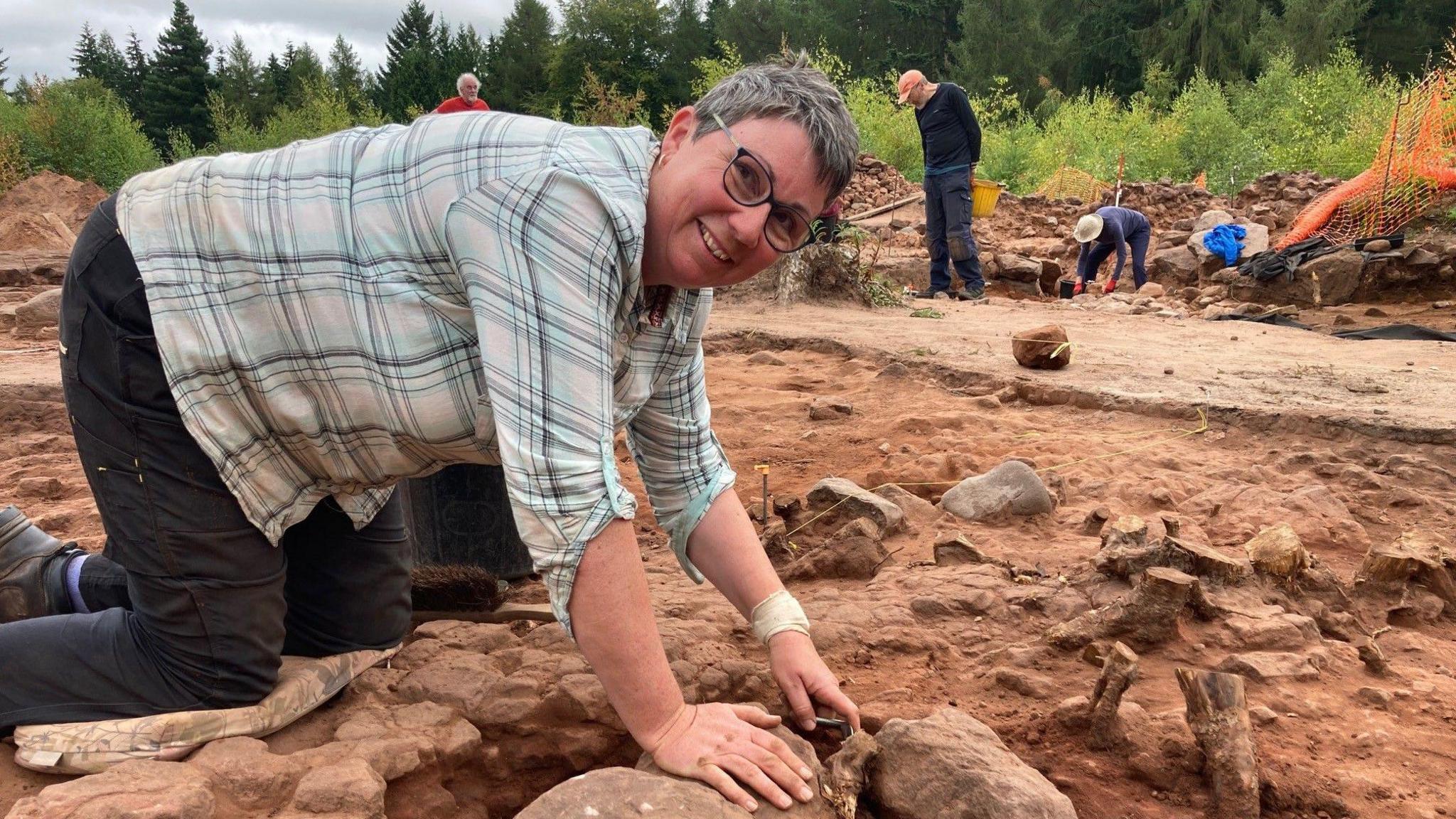
Catherine Wood said she had enjoyed being part of the archaeology team
Catherine Wood, a volunteer archaeologist from nearby Great Ness, said they had discovered post holes - holes carved out to hold the bottom of a wooden post - of different sizes, suggesting a structure once stood over the shrine.
"We don't yet know yet what sort of structures they were, it's all a bit of a quiz over here at the moment," she said.
Ms Wood moved to the area three years ago and said: "I've always wanted to get involved in archaeology."
"It's been such a great experience, I've learned so much."
She said the excitement really hit her when she was clearing some ramparts.
"I was just kneeling there thinking the last person to be in that space was over two-and-a-half thousand years ago when they built it and to me that's just mind-blowing," she said.
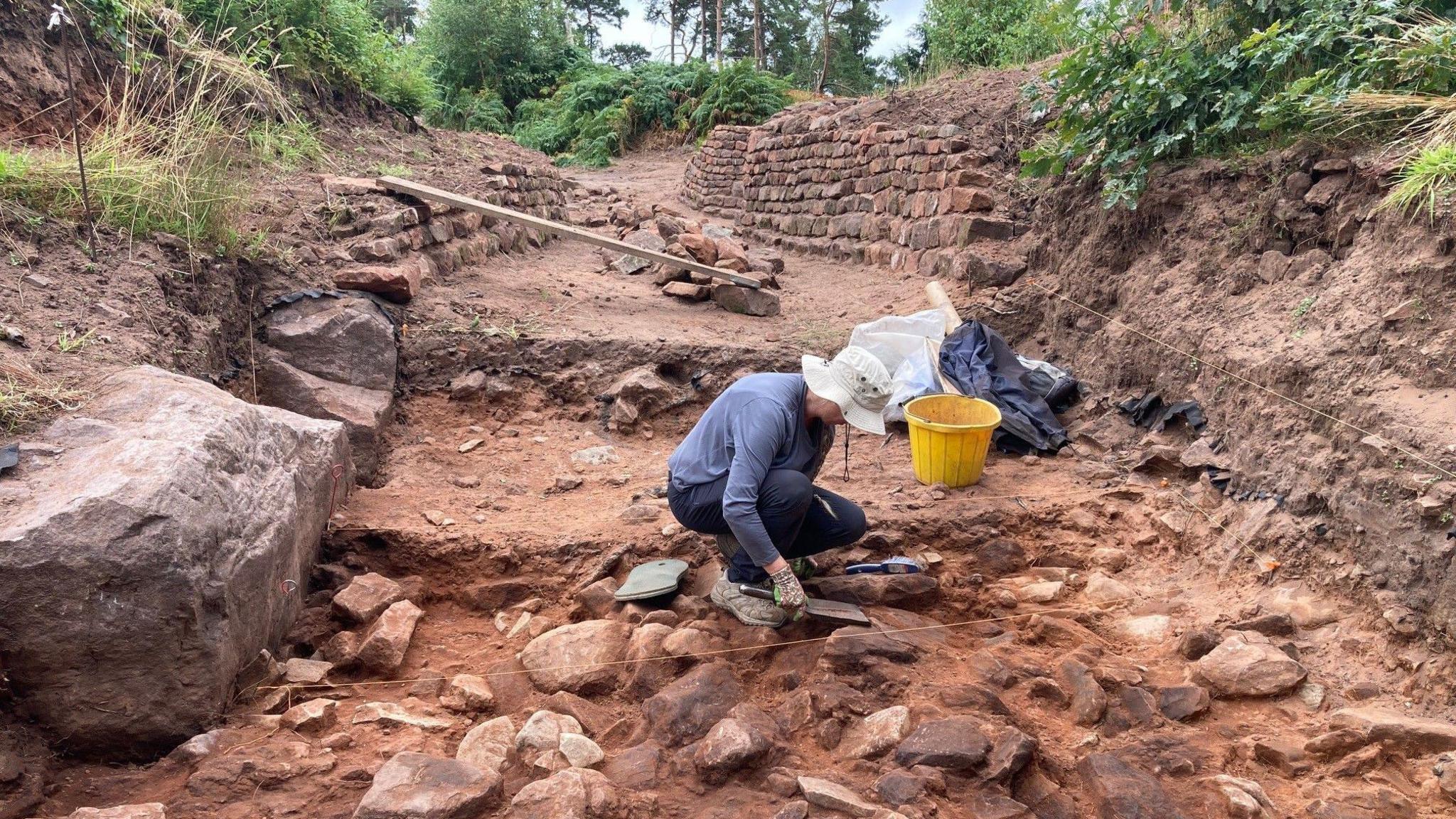
The archaeologists are coming to the end of a series of digs at the site
Dr Reilly said he hoped to see artists' drawings of the site as it once was on information boards around the site.
He also said 3D reconstructions could be created and any objects found would be returned to the county and given to the Shrewsbury Museum in a couple of years.
Follow BBC Shropshire on Facebook, external, X, external and Instagram, external. Send your story ideas to: newsonline.westmidlands@bbc.co.uk, external
Related topics
- Published22 September 2023

- Published12 July 2023

- Published18 January 2023
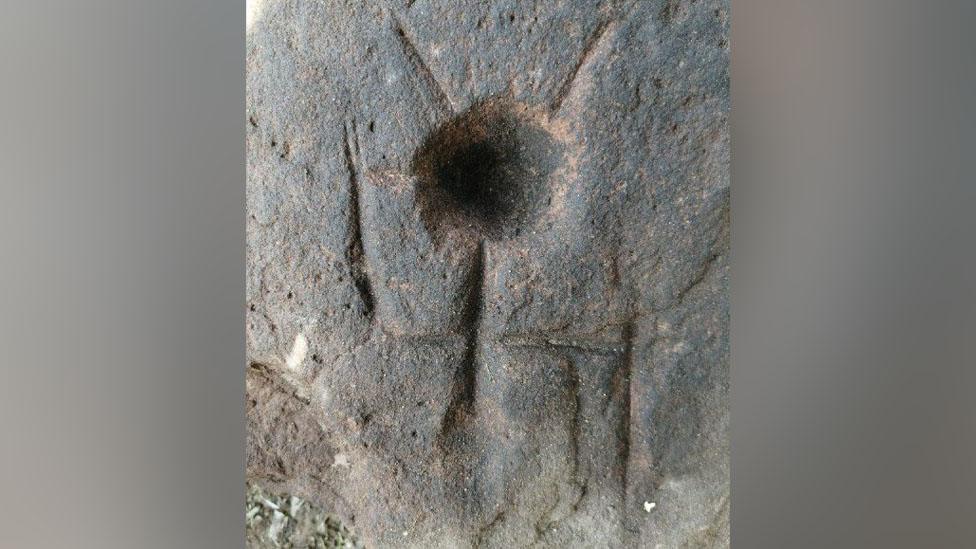
- Published3 October 2022
